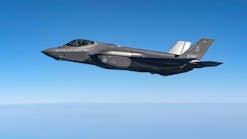Officials at the Minneapolis-St. Paul International Airport are resolving to save energy and modernize some of the airport’s privies this year.
Projects scheduled to begin early this year include the latest phase of a years-long energy conservation effort that touches on everything from the parking ramps to the moving walkways and upgrades two sets of restrooms.
The projects are planned as airport officials celebrate the 50th anniversary of the opening of the Lindbergh Terminal. The terminal opened in January 1962 with 600,000 square feet of space, 24 gates and two concourses designed to serve 14,000 travelers a day.
According to the Metropolitan Airports Commission (MAC), the terminal now accommodates 80,000 people per day on 2.8 million square feet of space, with 117 gates and seven concourses.
The 2012 projects aren’t as dramatic as the new runways and concourse expansions of previous years, but the work promises to cut energy costs throughout the airport and reduce water usage at public restrooms, airport officials say.
Dennis Kowalke, airport development project manager for the MAC, said the energy reduction projects stem from the MAC Energy Conservation Program, which dates to 2000.
The commission is spending about $3 million per year on the effort, up from $1 million in 2000 and $2 million in 2009. That $3 million budget is more than a third of what it cost to build the Lindbergh Terminal — $8.5 million — in the early 1960s.
But the program — which touches on mechanical, electrical, plumbing, lighting, building envelope and conveyance systems — promises to be worth the money, according to MAC officials. MAC’s Capital Improvement Program funds cover the costs.
Kowalke said the commission is saving about $4 million a year in energy costs through improvements in those areas. “We have been doing this for many years; it’s a very successful program,” he said. “These projects are reducing our utility bills substantially every year. That is the real reason to do this. ”
The projects are designed to pay for themselves within five years as a result of energy savings, he said.
According to a recent bid notice from the MAC, the 2012 energy program calls for generator emissions upgrades at the Terminal 2 parking ramp, a boiler stack heat recovery system, motor efficiency controllers at escalators and moving walkways, and a solar thermal panel heating system, among other projects.
“We are focusing across the MSP campus,” Kowalke said. “The project entails many different pieces. It’s a multitude of conservation areas. ”
The restroom upgrades planned for 2012 are designed to modernize facilities that date to the early 1970s, said Alan Howell, MAC’s airport development architect.
The project calls for water-saving faucets, improved accessibility and energy-saving fixtures for two sets (men’s, women’s and family) of public restrooms.
Work includes demolition of interior partitions and plumbing fixtures and construction of metal stud and masonry interior partitions, as well as finishing, mechanical, plumbing and electrical duties, according to the bid notice.
The work this year is only the beginning: In the next 20 years, the plan is to renovate or replace the majority of the 100 sets of public restrooms throughout the airport, Howell said.
The restroom work isn’t cheap — about $650 to $700 per square foot, Howell said. But the updated restrooms are designed to have a 40-year lifespan, he said.
As part of the restroom improvement effort, the MSP Arts and Culture Program is looking for an artist to create designs for “two-dimensional, human-scale mosaic artworks” for display at the entries to restrooms throughout the airport.
The budget for the initial mosaic project is $50,000: $24,000 for artist fees and $26,000 for materials and installation. An artist will be selected in late February, and the first installation will begin in September, according to the MAC.
For various projects at the airport, including restroom and energy upgrades, MAC is working with a project team that includes Minneapolis-based Kraus-Anderson as the construction manager and Minneapolis-based Architectural Alliance as the designer.
Construction bids for the restroom program and the energy conservation program are due Jan. 17.
Also, HMS Host, which operates concessions at the airport, is putting out a call for minority- and women-owned businesses to help build out food and beverage operations.
HMS Host is seeking mechanical, plumbing, electrical, flooring, painting, millwork, carpentry, signage installation and general contractors, according to its recent notice in the State Register.
Copyright 2012 Dolan Media Newswires




